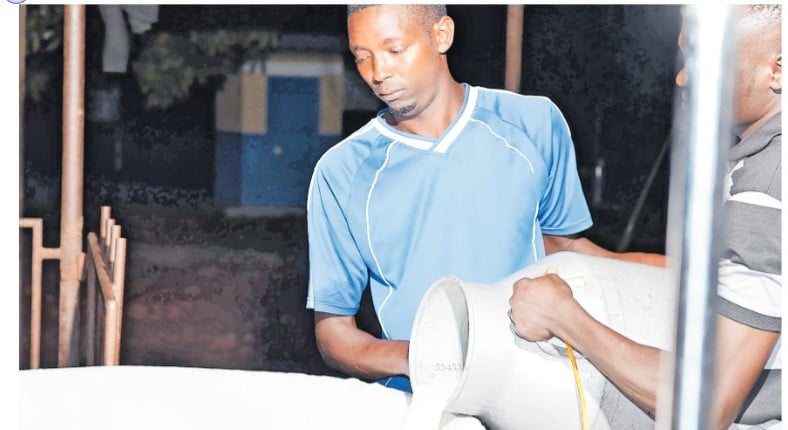Prime
Concrete can make or break your building

Workers pour a slab concrete at a construction site. Net photo
The strength and sustainability of a building depends on the quality of material used in its construction. Among the other materials used in construction, concrete which is mixture of fine and coarse aggregate (lake sand and stone) together with cement is tipped as the most important.
To Rashid Senyonjo a structural engineer with HIL Consult, the choice of concrete is essential for the construction of any building. However, not all concrete does the same thing, there is specific concrete used for specific construction work.
Normal or concrete
This is usually of grade 20 millimetres. Normal concrete is commonly used in house foundations, ground slabs of a house and on the ring beam,’’ he says.
This particular concrete is a mixture of cement, water and aggregate in the ratios of 1:2:4. Normal concrete has a high compressive strength but is weak in tension and so is not durable in harsh weather conditions. However, it possesses good workability given that all the concrete ingredients are in proper and accurate proportions.
Senyonjo says the average settling period of normal concrete is between thirty to ninety minutes.
Heavy or high strength concrete
According to Joseph Oryang, an engineer, high strength concrete is classified from 25-30 millimeters and above. This type of concrete is made by adding less water to the cement during mixing. It is used in column bases of houses of about three to four levels.
However, he says sometimes silica fume can be added to the mixture. Preventing the formation of calcium hydroxide crystals in the cement which lowers the strength of the cement bonding.
“Aggregate must be selected carefully for high strength mixes, as weaker aggregates may not be strong enough to resist the loads imposed on the concrete causing failure in constructions,’’ remarks Oryang.
High strength concrete has no integration in it, making it easy to place and highly durable.
Reinforced concrete
Senyonjo remarks, that reinforced concrete can either be normal or high concrete; the only difference is that it is enriched with steel. The steel reinforcement in forms of mesh, rods and bars ensure a maximum bond and hardening between the concrete and the steel.
“This type is commonly used in construction of floor and roof slabs, columns and beams of both residential and commercial structures due to the heavy loads that need support from the strong steel bars,’’ he explains.
Pervious concrete
Moses Mukiibi of Hidden Treasure and Trash, dealers of pavers, says pervious concrete contains holes in the material allowing water and air to pass through it. The sand content in the concrete mixture is low keeping it porous, letting water to pass through easily seeping into the ground. Pervious concrete is mainly used in construction of pavements and requires low maintenance.
“These pavers are normally 60milmaters thick depending on where it is applied and the design. These can include the esa otto, grano, habag, trifogolio types of pavers,’’ says Mukiibi.
However, Mukiibi says mixes of the domestic and heavy duty pavers will differ.
Light or basic concrete
To Senyonjo lightweight means concrete with a low density. This type of concrete is of low grade and is classified as class10- 15 millimeters. Light concrete is graded in ratios of 1:4:8, this generally consists of cement and coarse aggregate only (sand).
Light weight concrete is used on external walls, filling walls, fixing bricks among others.
Caution
Senyonjo cautions against using the wrong concrete to avoid damages. He urges using the type of concrete indicated on the drawn house plans in its exact ratios.




